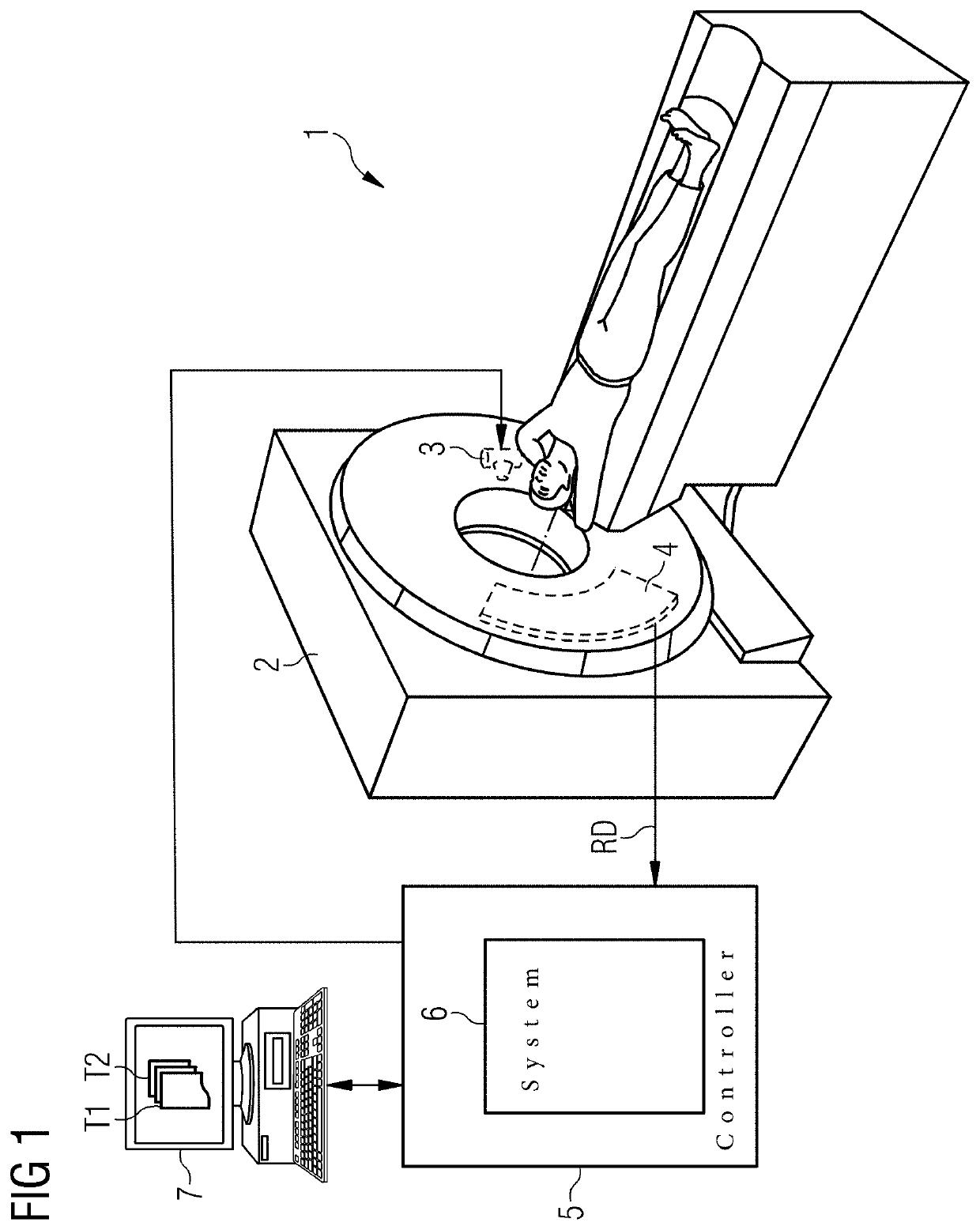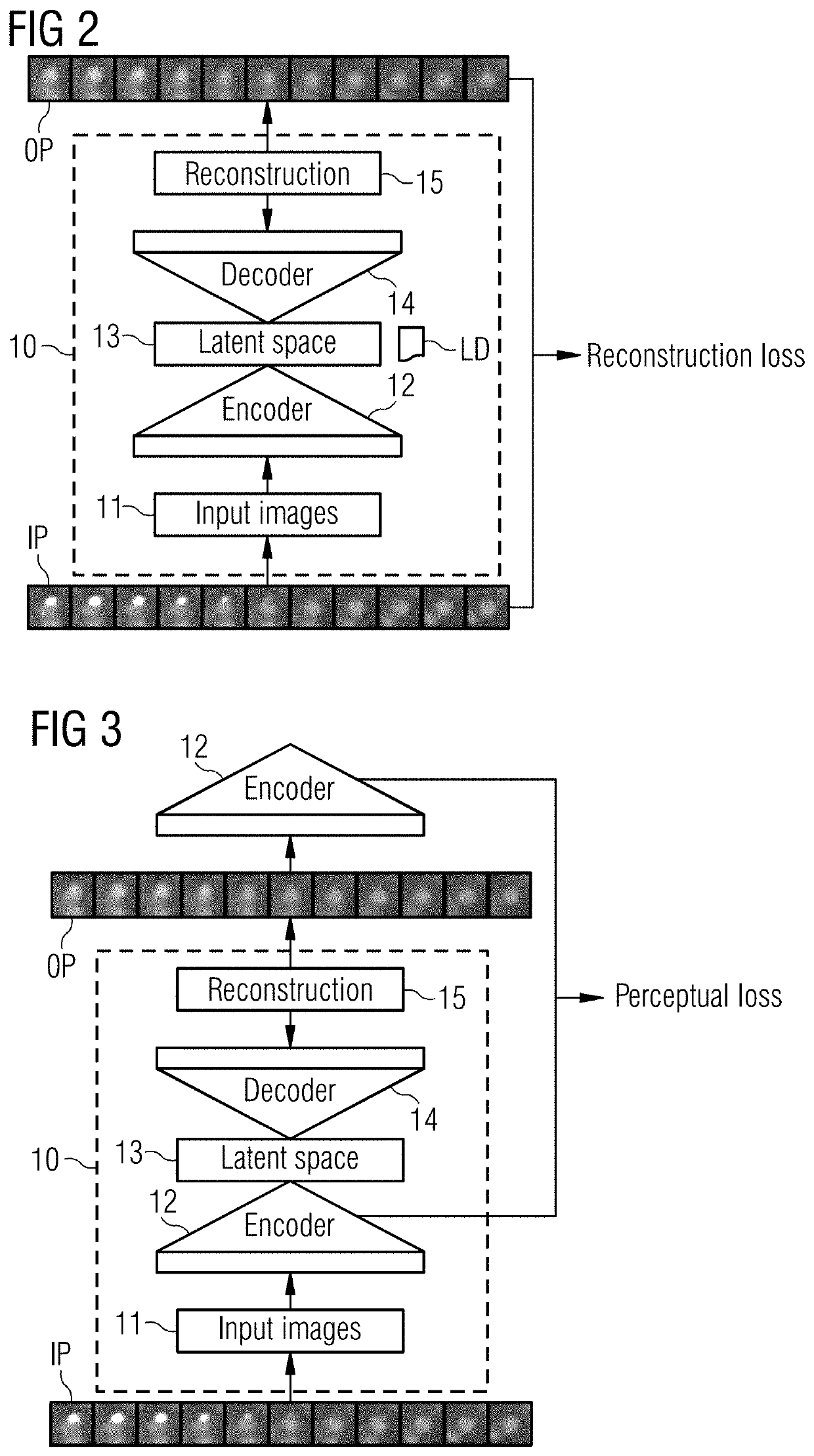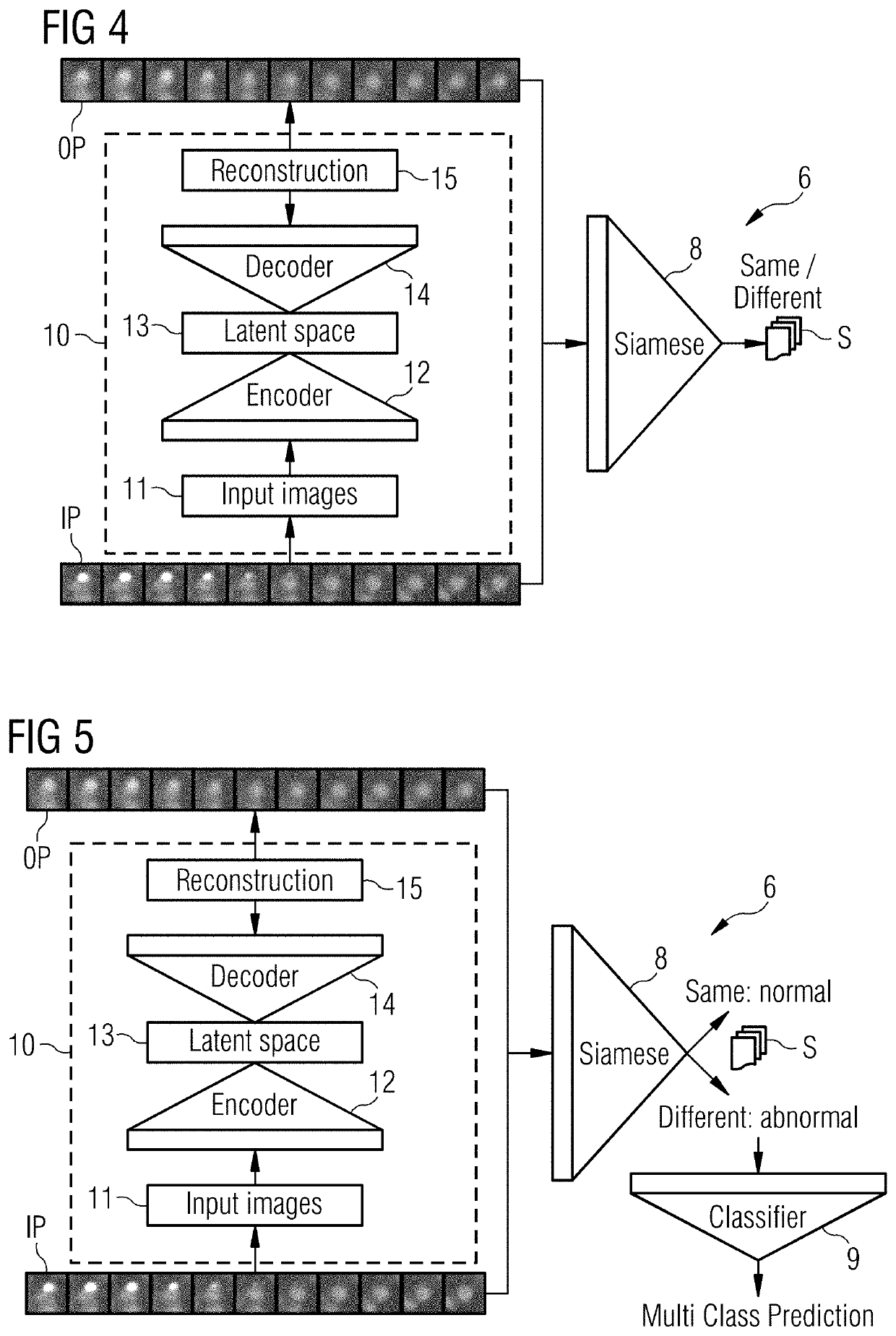System and method for detecting anomalies in images
a technology of anomalies and images, applied in the field of methods for detecting anomalies in images, can solve problems such as lack of reliability, systematic errors, and complex training, and achieve the effects of low cost, high uncertainty, and high uncertainty
- Summary
- Abstract
- Description
- Claims
- Application Information
AI Technical Summary
Benefits of technology
Problems solved by technology
Method used
Image
Examples
Embodiment Construction
[0064]FIG. 1 shows a simplified computer tomography system 1 with a control device (controller) 5 including a system 6 for carrying out the method according to one embodiment. The computer tomography system 1 has in the usual way a scanner 2 with a gantry, in which an x-ray source 3 with a detector 4 rotates around a patient and records raw data RD that is later reconstructed to images by the control device 5.
[0065]It is pointed out that the exemplary embodiment according to this figure is only an example of an imaging system and the embodiment can also be used on theoretically any imaging system that is used in medical and non-medical environment. Likewise, only those components are shown that are essential for explaining the embodiment. In principle, such imaging systems and associated control devices are known to the person skilled in the art and therefore do not need to be explained in detail.
[0066]The imaging system (here the CT system 1) records images that are used for traini...
PUM
 Login to View More
Login to View More Abstract
Description
Claims
Application Information
 Login to View More
Login to View More - R&D
- Intellectual Property
- Life Sciences
- Materials
- Tech Scout
- Unparalleled Data Quality
- Higher Quality Content
- 60% Fewer Hallucinations
Browse by: Latest US Patents, China's latest patents, Technical Efficacy Thesaurus, Application Domain, Technology Topic, Popular Technical Reports.
© 2025 PatSnap. All rights reserved.Legal|Privacy policy|Modern Slavery Act Transparency Statement|Sitemap|About US| Contact US: help@patsnap.com



